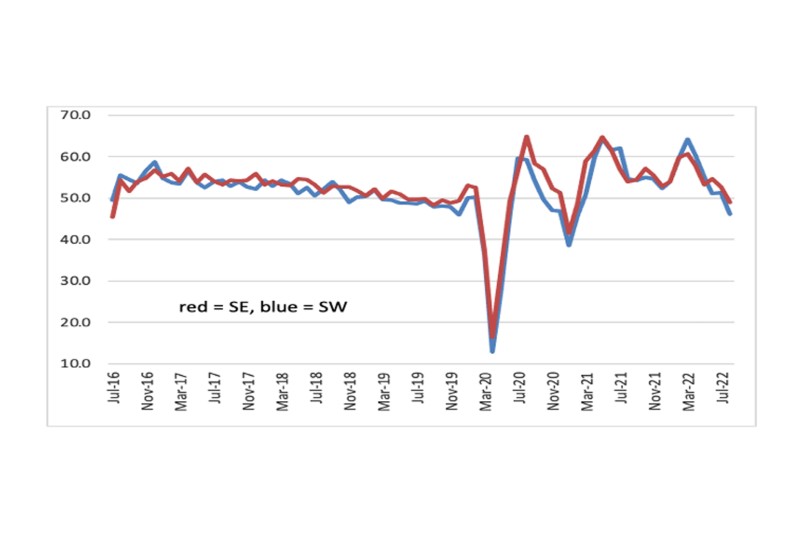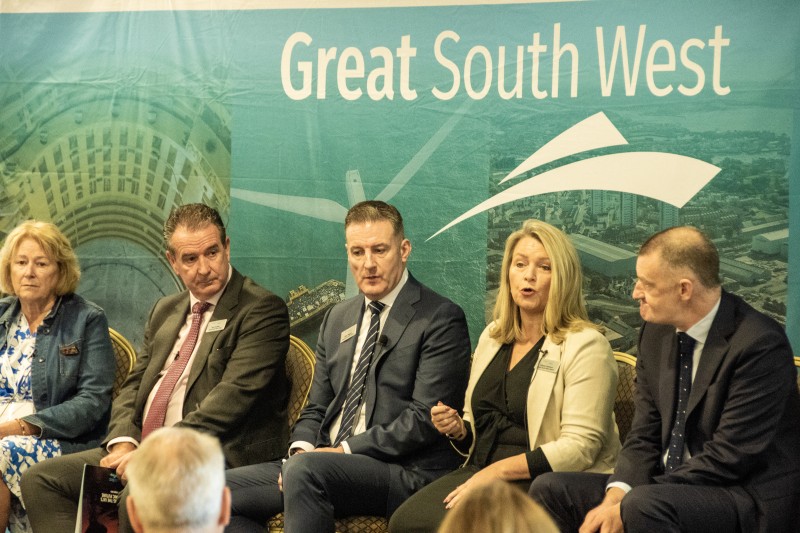BU's Emeritus Professor Nigel Jump writes the next in a series of blogs looking at the state of the economy.
UK output seems to have contracted in the third quarter. According to ONS figures, July was modestly positive. Non-official surveys indicate August was quite negative. Anecdotal evidence shows no real bounce in September. The mood of consumers and businesses has deteriorated (consumer confidence measured by GfK is at its lowest on record), as they look forward to a difficult winter. “Experts” are calling a recession this Winter, with the latest evidence suggesting it may have started. Moreover, the financial markets are worrying about a global retrenchment.
UK inflation remains much higher than desirable. The year-on-year rate of the CPI was 9.9% in August and many foods and fuels continue to experience significant price hikes. Producer and raw material prices were up 16.1% and 20.5% respectively in the year to August, driving the price chain upwards. The Bank of England has increased interest rates to 2.25% and more is expected, especially as money supply growth remains too fast and the latest fiscal package is potentially inflationary.
The latest purchasing managers survey (PMI) shows activity in Southern England dropped sharply in August (see chart: PMI below 50 = contraction). In SW England, optimism fell, new orders were negative, and employment was flat. SE England was a little better but still more modest than before. Economic volatility remains high compared with pre-Brexit/Pandemic times.

In response, the new PM Truss Government has adopted bold fiscal measures, ranging from direct subsidies to tax cuts for both businesses and households. The overall UK policy plan is as follows:
- The Treasury will try to stimulate growth with a £45bn package of tax cuts on top of its £100bn+ package of subsidising high energy prices. It is also promising future supply side changes to planning and other regulations in order to encourage future business investment.
- Having yet to ‘catch up’ with recorded price increases, the Bank of England will continue to increase interest rates. It must do this as long as inflation is expected to remain significantly above target. Also, it is going to re-start selling gilts into the market (quantitative tightening).
The financial markets have cast a negative verdict on these plans, markedly selling sterling and UK gilts because they do not like the order of the proposed policy adjustment. Tax cuts should be the reward for structural change to a higher growth path driven by the supply side and not the start of the process.
Meanwhile, the weaker pound (1£<1.10$) will lead to higher import costs, higher inflation and higher interest rates than would otherwise have been the case. Also, the lower gilt prices (pushing 10-year yields above 4%) means higher borrowing costs for government, business loans and personal mortgages which, ultimately means higher taxes for all than would otherwise have been the case. Against this policy background, discretionary profits and incomes, and thereby share values, are vulnerable.
The government hopes its attempts at a short-term stimulus to growth through tax cuts can be sustained by structural (deregulatory) reforms that spark higher investment into the longer run. This will depend on whether (and when) any disposable funds released to consumers and firms are spent or saved or absorbed by other costs, whether (and when) they are spent on domestic or foreign goods and services, and whether (and when) they are invested in new productive infrastructure, plant and machinery, and skills. The Barber Budget of 1972 tried this trick – stimulate spending and hope it goes on domestically supplied goods and services with sustained growth potential. After an initial boom, there was a ‘stagflation’ bust. That misjudged policy had unhelpful impact well into the 1980s.
Locally, a key Truss government measure is the proposal for Investment Zones to encourage levelling up investment and targeted regional development. Dorset Council is one of the 38 local authority areas invited to work with government on establishing zones with combinations of lower taxes, accelerated development and a local growth spending settlement. The impact question is whether these measures will move investment that would have happened anyway into the zones from surrounding areas and/or whether there is a real, net increase in productivity-led investment and growth?
An ambitious but risky policy programme is underway, with the Bank wanting to bear down on demand to kill inflation and the Treasury wanting to bolster it and to stimulate supply to foster growth potential. Success will see Messrs Truss and Kwarteng celebrating faster growth (towards its 2.5% underlying average target) with inflation moving back down (towards the Bank’s 2% per annum target) into the next election and beyond. Failure will bring more stagflation with a continuing high ‘misery’ index (latest 12.2% = 8.6% CPIH plus 3.6% unemployment rate).
The bottom line will be driven by the behaviour of each and every one of us. How will we respond to the policy incentives we are being offered?
- With confident entrepreneurial risk-taking that drives better investment in infrastructure, technologies and skills and fosters more competitiveness in new markets at home and abroad?
- With cautious risk aversion and hoarding of funds in response to lower real incomes, job losses and uncertain debt finances?
Remember, higher and accelerating productivity, in absolute and relative terms, is the only sustainable engine of economic progress. Recent policy changes may or may not find a key to start that engine. Policy makers have placed their bets on a particular set of policy ignitions. We must now see how all of us respond, twisting or sticking on the latest set of policies for stagflation.



